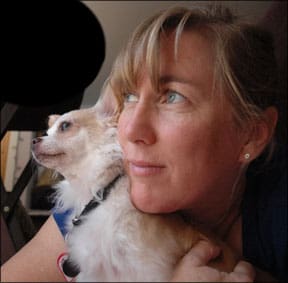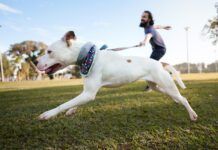After sharing my life with an eccentric Border Collie (is that a redundant phrase?), I was prepared for odd behavior from an Australian Shepherd belonging to a friend I hadnt seen for years. But as my friend and I chatted in her kitchen over coffee, catching up, I couldnt help but notice her Aussies strange behavior in front of her food bowl. The dog stood frozen over her bowl, nose poised just above the kibble inside. Occasionally she shoved her muzzle into the food, stirring the kibble vigorously, before taking her vigilant stance just above the food again. She appeared to be scrutinizing the food carefully, before shed take a single piece of kibble, chew it, and start the process again.
288
I observed the dog repeat this funny little circuit at least four times over the course of at least 10 minutes before finally interrupting my friend. Cathy, I give up. What is your dog doing with her food?
Ah! You noticed her two-hour breakfast! Cathy laughed. That started about four years ago . . . ever since the one time that ants got into her food bowl. Shes been worried about them ever since!
That was the most extreme sort of eating disorder I had ever heard of in dogs. At least, until I heard of dogs exhibiting a more serious potentially life-threatening eating disorder: anorexia.
Dogs lose their appetites for a variety of reasons, few of them as innocent as ants. Most conditions that cause inappetence need to be investigated at your veterinarians office, and quickly, in the case of older or ill dogs, or those taking medications of any sort.
Just the other day my friend Jamie was telling me about her efforts to get her previously ravenous German Wirehaired Pointer to eat something, anything, since he was started on a drug to treat his Cushings disease. Overnight, he went from being a canine vacuum, unsafe around any edible item, to completely disinterested in food. Fortunately, having just edited an excellent article about inappetence by Mary Straus (see the next page), I was able to give Jamie plenty of ideas for how to get poor Sammy to eat again.
A medical condition was also behind the sudden loss of appetite experienced by Mokie, who was my long-haired Chihuahua before he went to my sister Pams house for a dog-sitting visit from which he hasnt returned. Mokie is usually a ravenous eater, who Hoovers up sandwich crumbs before they hit the floor and is prone to snatching dog cookies right out from the jaws of Pams older, slower Jack Russell. (In fact, thats Mokie in the photo on page 5, taking food from an unhungry Labrador 10 times his size.)
When Pam told me that Mokie wasnt eating, I knew something was seriously wrong. As it turned out, his back was badly out of whack. He began eating again immediately after a visit to a veterinary chiropractor, although it took him a few days to start stealing food from his packmates again.
More information about chiropractic for canines, by the way, appears on page 20 of this issue.
-Nancy Kerns





